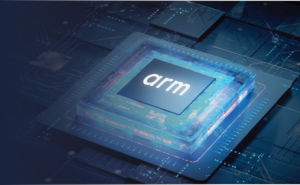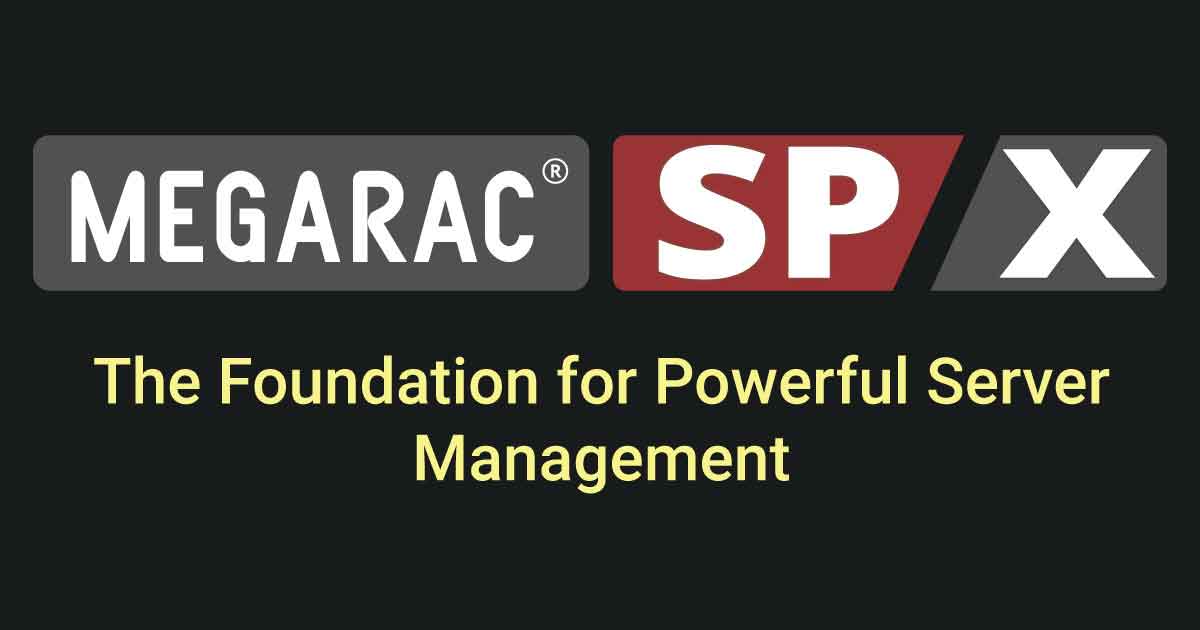In our previous post on MegaRAC SP-X, we gave a brief overview of some of the key features of this powerful BMC Firmware Management Solution, including supported standards, authentication and security features, sensor management, and the MegaRAC DS IDE for extending and customizing the firmware.
In today’s post, we will go a little more deeply into some of the capabilities of different SP-X modules and specification support, to give an even better idea of the power and flexibility of this solution:
- Hardware Inventory: MegaRAC SP-X hardware inventory collects, stores and analyzes information about the system’s hardware assets including the baseboard, media devices, memory, PCI and processor. Some of these features are advanced features with options for additional OEM customization.
- Software Inventory: MegaRAC SP-X software inventory collects information about the system’s software assets, including any installed software and service packs, a list of processes currently running and services available. It can also share information on the real-time status of selected host devices. Some of these features are advanced features with options for additional OEM customization.
- Power Control Management: This feature allows the user to control the power of the managed server using the web interface, WSMAN or CLP from anywhere on the network. This module also enables the user to perform various actions like reboot, shutdown and power cycling.
- BIOS Update Management: BIOS firmware updates can be performed remotely to the managed server, with options for additional OEM customization.
- User and Group Management: MegaRAC SP-X provides standard IPMI-based user management, as well as the ability to authenticate and provide access to the users from the Active Directory / LDAP.
- Firmware Upgrade: MegaRAC SP-X features IPMI-based, reliable firmware update. AMI’s own YAFU protocol definition is implemented through OEM commands in the IPMI stack for firmware update, and a YAFU client application can be used locally or remotely to update the firmware. It uses USB or KCS for the local interface-based update and LAN for remote firmware update. YAFU client application support is available for Windows®, Linux® and DOS platforms. YAFU based firmware update client support is also available in the UEFI environment. These applications allow for upgrading of the full firmware image or individual sections of the image as needed, as well as forward and backward configuration migration with the provision to select specific file overrides. Additionally, the multi-platform LIBIPMI library has been extended to support all the AMI-specific OEM commands for firmware update.
As we discussed previously, support in MegaRAC SP-X for a wide range of communication standards and protocols is at the core of its power and flexibility. Let’s now take a closer look at some of the details of how this support is implemented.
IPMI 2.0 Enhancements
MegaRAC SP-X provides complete IPMI 2.0 based management of the service processor, with all mandatory requirements and commands of IPMI 2.0 supported. It then goes above and beyond the standard IPMI 2.0 specification and implements additional enhancements to the firmware stack, including:
- Advanced node management and power management features
- DCMI 1.1 and 1.5
- APML support
- Support for OEMs to overwrite standard command processing with custom commands
- Support for SMIC, BT, SMBus and serial interfaces
- Dynamically pluggable transport layers (LAN, KCS, IPMB, Serial, USB)
- GUID creation
- IPv6 support on LAN channel
- Multiple LAN and IPMB support
IPMB Interface Support
MegaRAC SP-X firmware features a secondary IPMB interface to support a system requirement for two IPMB interfaces available at the same time. The firmware also has provisions to support the requirements of multi-master I2C systems.
LAN Interface Support
MegaRAC SP-X supports Multiple LAN interfaces in IPMI. This can easily be configured at the firmware level using MegaRAC DS with a minimal configuration change. SP-X also supports Network Controller – Sideband Interface (NC-SI), a DMTF-defined protocol to connect the BMC to the NIC to enable out-of-band remote manageability. A specific page in the SP-X user interface allows users to enable the NCSI interface, define channel number and identify the Package ID. Finally, SP-X provides “virtual Ethernet” functionality via USB for both Microsoft® Windows® and non-Windows environments, via the Remote Network Driver Interface Specification (RNDIS), which is a Microsoft Windows specification, as well as the USB Communication Device Class Protocol (CDC).
DMTF Common Information Model (CIM) Support
The CIM model has been defined by the Distributed Management Task Force (DMTF) industry organization with the goal of improving interoperability between computers from different vendors. CIM provides a common definition of management information for systems, networks, applications and services, and vendor extensions. MegaRAC SP-X supports DMTF CIM with the MegaRAC SP-X CIM Object Manager (QOM), a true object manager with CIM class handling that supports all DMTF profiles.
SMASH Command Line Protocol (CLP) Specification Support
DMTF’s SMASH initiative comprehends a group of specifications such as the Server Management Command Line Protocol (SM CLP) Specification, the SMASH Managed Element Addressing Specification, the SMASH CLP-to-CIM Mapping Specification, the SMASH CLP Discovery Specification, and SMASH Profiles. All these are compliant with the broader DMTF CIM schema. The SMASH Profiles standardize management of CIM components such as fans, processors, memory, and blade enclosures, and can be used by any DMTF protocol to represent different systems in a consistent and interoperable manner.
MegaRAC SP-X can integrate both a complete set of SMASH infrastructures and profiles or a simplified version called SMASH-lite. The MegaRAC SP-X CLP module provides text redirection over SSH, power management with role-based authentication and support, dynamic target discovery and firmware update support. MegaRAC SP-X also supports multiple concurrent SMASH CLP sessions.
WS-Management (WS-MAN) Support
Like other DMTF standards, WS-Management (WS-MAN) focuses on cross-vendor management interoperability. These specifications identify a core set of web services describing operations that are central to all system management:
- DISCOVER the presence of management nodes and navigate between them GET, PUT, CREATE and DELETE single management resources, such as setting and dynamic values;
- SUBSCRIBE to events issued by management resources;
- EXECUTE specific management methods with strongly typed input and output parameters.
The MegaRAC SP-X WS-MAN modules offer a complete implementation of WSMAN Web Services.
Thanks for reading today’s Tech Blog! We would love to hear your thoughts in the comments section below, as well as suggestions on any other AMI products you would like us to spotlight in future blog posts!






